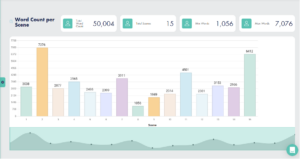
Stories written for young audiences need to be better than stories written for older audiences.
And they must have a stronger structure so young audiences can clamber over the story without fear of it collapsing.

When we talk about young audiences—Middle Grade and Young Adult—we are not talking about genre, we are talking about age-based categories.
WHY ARE STRUCTURALLY SOUND STORIES SO IMPORTANT?
Some writers forget about story structure. They forget when writing for young audiences, the story structure must be strong.
Those forgetful writers have forgotten who they are writing for.
As a writer, as a self-editor, we have a duty to make sure the young audiences have a book that gives flight to the reader’s imagination.

And how can we get the very best story structures for the young audience? Remember, these three top editing tips:

YOUNG AUDIENCES WILL NOT SUFFER BAD STORIES
Young audiences are not harsh critics: they are honest critics. They read a good story into the night, with a torch if needs be, but they will not carry on reading a weak story.
There must be a story in the pages of a book aimed at young audiences. If there is no story, then the child will put the book down.
And how do we know a story exists? We can find the answer in Peter Pan!
Peter Pan can fly because the story is so well structured.
LET’S LOOK AT HOW STRONG THE GREAT STORIES ARE:
Let’s look at why Peter Pan has stood the test of time.
Hint: look at the structural make up.

Just look at Peter Pan’s story arc, and the placement of the five story arc scenes!
JM Barrie knew how to structure a powerful story.
If you wave your hanky and clap when you believe in fairies, then wave your hanky and clap because you must believe in the story’s structure.
Read more about story arcs here.


YOUNG AUDIENCES ARE TAUGHT GOOD WRITING
Schools are marvelous, their libraries are places of escape and entertainment for their young audiences. Their classrooms are full of enthusiastic teachers.
I spent part of the COVID pandemic home-schooling. And I was so excited to see the UK’s approach to teaching creative writing. Thanks, Twinkl!
As an FCSC editor, it made my heart sing.
Are you ready to find out what children are taught in their creative writing classes?
[Drum roll]
Character—Plot—Setting!
Kids learn, in the UK at least, that to create vivid writing they need to have Character-Plot-Setting.
And if they are told that is how to write a story, you can be very sure they are going to be expecting to see these three structural groups in books they read.
As a writer, as a self-editor, we need to focus on these three groups.
And those are the three overarching groups that are in Fictionary!

When you consider writing your story for young audiences, consider how the Character—Plot—Setting interact. Perhaps read books that are selling well and analyze their Character—plot—setting.
Then look at your own work, scene by scene.


YOUNG AUDIENCES EXPECT THE WORD COUNTS TO BE TAMED
When choosing between two books on a shelf, then some children are still in that between and betwixt stage where they might make their decision on how long it will take to read the book.
You might have a goal in mind for the structure. When you are writing the first draft, do not worry about these numbers. When you are editing, that is when you look and decide the scenes’ lengths, the book’s overall length.
See this great post in the community that talks about what agents expect to see for YA word count.

USE THESE 3 TOP EDITING TIPS TO WRITE A STRONG STORY STRUCTURE
When writing for young audiences, remember they are passionate, loyal readers. And they love to play.
And when your story structure is strong, the young audiences will be your passionate and loyal readers.
RESPECT THE READER—RESPECT THE STORY STRUCTURE
A story for young audiences should be tested by looking at its deep structure. These are just the top three structural ways to study a story’s structure. There are lots more ways to look for story structure strength.
Fictionary looks at these comprehensively.
Once you have completed your editing, enjoy letting the young audiences clamber over your robust story.


